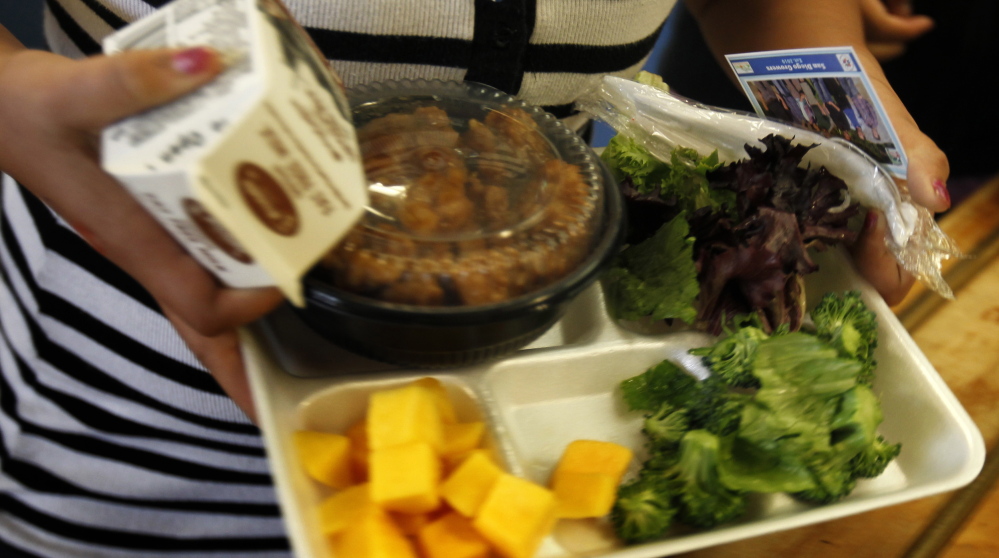Going to school hungry makes it hard for kids to concentrate, study and learn. And in Maine – where one in four children is unsure when the next meal will be – too many K-12 students face this massive barrier to getting an education.
Although schools try to alleviate this food insecurity by offering free and reduced-price meals, social and logistical hurdles keep children who are eligible from enrolling and taking part in the school meal program. That’s why it’s good news that six Maine districts or schools are taking part in a new national initiative that provides free meals to all students.
Community Eligibility is an innovative way to make sure more kids in our state get the sustenance they need to get the most out of their schooling, and it’s a low-cost option that could have a big payoff in some of Maine’s neediest communities.
Kids miss out on free and reduced-price school meals for a variety of reasons. Sometimes their parents aren’t comfortable asking for help filling out the complicated applications. Parents and children often feel they’ll be stigmatized if people know they qualify for subsidized breakfast and lunch. And in low-income families, the cost of even reduced-price lunch can add up: about $1,000 a year for two kids in the school system.
Community Eligibility offers a common-sense alternative. The program allows schools and districts where at least 40 percent of students qualify for free lunch to offer free meals to all students – no family applications required. The school tallies how many meals it serves each day and files a report each month with the U.S. Department of Agriculture, which reimburses staff salaries and other costs of providing the meals.
Research backs up the initiative’s effectiveness: In Illinois, Kentucky and Michigan, the first pilot states, lunch participation rose by 13 percent and breakfast participation by 25 percent, according to the Center on Budget and Policy Priorities and the Food Research and Action Center. At least early on, these findings have been echoed in Skowhegan-based School Administrative District 54. There, the number of kids eating school meals jumped by 20 percent the first day of school this year to over 80 percent of the district’s 2,600 students, Superintendent Brent Colbry recently told MPBN.
Because participating districts don’t have to hand out and collect applications and process lunch payments, they save on administrative costs and have more funds to improve school menus. Schools can make meals more convenient for students – for example, by offering breakfast in the classroom and at different times of day. Kids spend less time waiting in line, giving them more time to eat.
The greater the popularity of the school breakfast and lunch programs, the lower the stigma associated with them and the greater the likelihood that they’ll reach kids from low-income families and ensure they get two nutritious meals a day – an outcome that has been linked to lower rates of absenteeism and tardiness and improved behavior and test scores. These students’ parents save money as well.
There are some new mandates. Eligibility for other government grants is usually assessed using subsidized-meal applications, so schools that no longer collect these forms have to figure out another way to determine whether they qualify. But in this regard, districts that are new to Community Eligibility can learn from districts in the pilot states.
The better a child’s access to nutrition, the better his or her chances in life. Community Eligibility helps meet this goal, to the benefit not only of students but also of educators, schools and entire communities, and the Maine schools and districts that are taking part should serve as role models all over our state.
Copy the Story LinkSend questions/comments to the editors.



Success. Please wait for the page to reload. If the page does not reload within 5 seconds, please refresh the page.
Enter your email and password to access comments.
Hi, to comment on stories you must . This profile is in addition to your subscription and website login.
Already have a commenting profile? .
Invalid username/password.
Please check your email to confirm and complete your registration.
Only subscribers are eligible to post comments. Please subscribe or login first for digital access. Here’s why.
Use the form below to reset your password. When you've submitted your account email, we will send an email with a reset code.